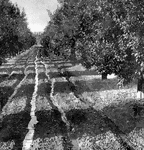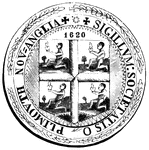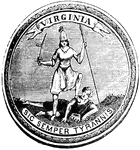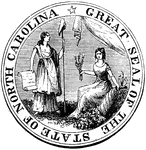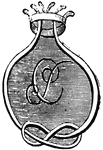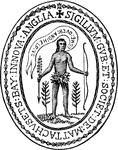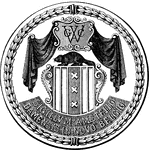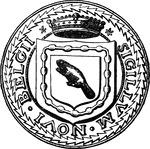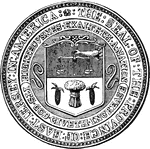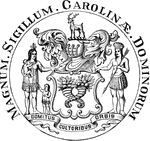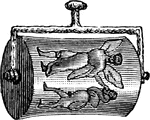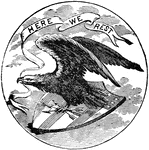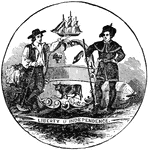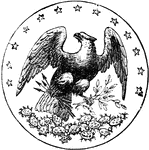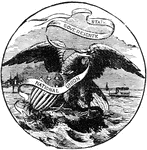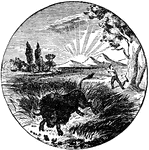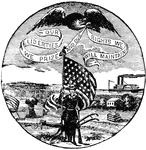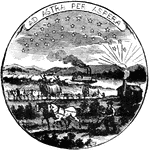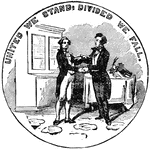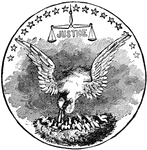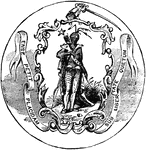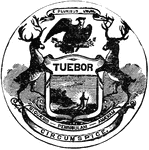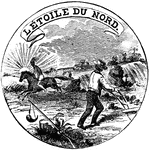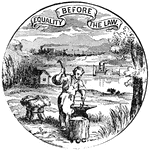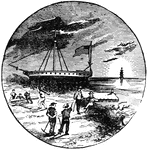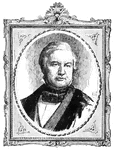
Millard Filmore
"Millard Filmore, Secretary of State and involved in the Compromise of 1850."—E. Benjamin Andrews…
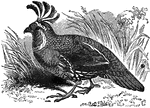
California Partridge
Found in California, the California partridge averages aproximately nine and a quarter inches in length,…

Plaice
"Weighing six to twelve pounds; it feeds on mollusca, crustacea, and young fish; inhabits sandy banks…
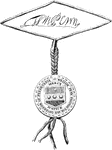
Penn's seal and signature
"Penn's Seal and Signature. This is a representation of the seal and signature of William Penn attached…

William Tryon Seal
"Seal and signature of Tryon. William Tryon was a native of Ireland, and was educated to the profession…
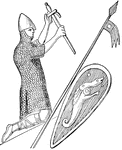
William the Conqueror
"William the Conqueror (1066-1087), as represented on his seal. Although William really ruled 'as king…
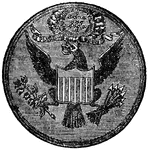
Eagle on Seal of United States
"The Eagle is a gold coin of the United States, value $10; half-eagle, $5; quarter-eagle, $2.50, double…
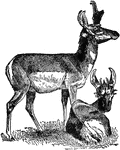
Prong-horn Antelope
"The Prong-horn Antelope inhabits the W. parts of North America, from 53 degrees N. to the plains of…
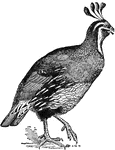
Lophortyx Californicus Quail
"The Quail is a small game bird; the Virginia species is common in North America, and so far south as…

Hooded Seal
"The Seal, of the family Phocidæ, or seal tribe, are, of all four-limbed mammiferous animals,…
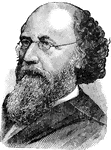
Stephen Johnson Field
Associate justice of the United States Supreme Court and 5th Chief Justice of the California Supreme…

Open-air schoolroom
"An open-air schoolroom in Sacramento, California. The inclosed room is used only in bad weather." —…

Pear Design
"Also known as the cone, the palm leaf, the river loop, the crown jewel, the seal, the almond, the feather,…
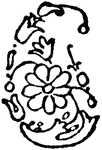
Pear Design
"Also known as the cone, the palm leaf, the river loop, the crown jewel, the seal, the almond, the feather,…

Pear Design
"Also known as the cone, the palm leaf, the river loop, the crown jewel, the seal, the almond, the feather,…

Pear Design
"Also known as the cone, the palm leaf, the river loop, the crown jewel, the seal, the almond, the feather,…
Pear Design
"Also known as the cone, the palm leaf, the river loop, the crown jewel, the seal, the almond, the feather,…
Pear Design
"Also known as the cone, the palm leaf, the river loop, the crown jewel, the seal, the almond, the feather,…
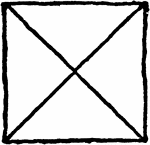
Solomon's Seal
Built on the right angle triangle and, like the Signet of David, it is found in many of the Turkish…

Palmetto
A species of palm indigenous to the United States. It is found abundantly in the Carolinas, Florida,…

Seal
The general name of certain genera of carnivorous mammals, havin feet adapted for swimming, and being…
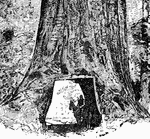
Sequoia
The name of a genus of gigantic trees of the pine family, nearly allied to the bald cypress of the southeastern…
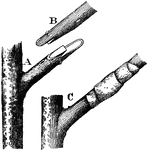
Tongue Grafting
To graft two plants together using the tongue or whip grafting approach, you must first make a sloping…

